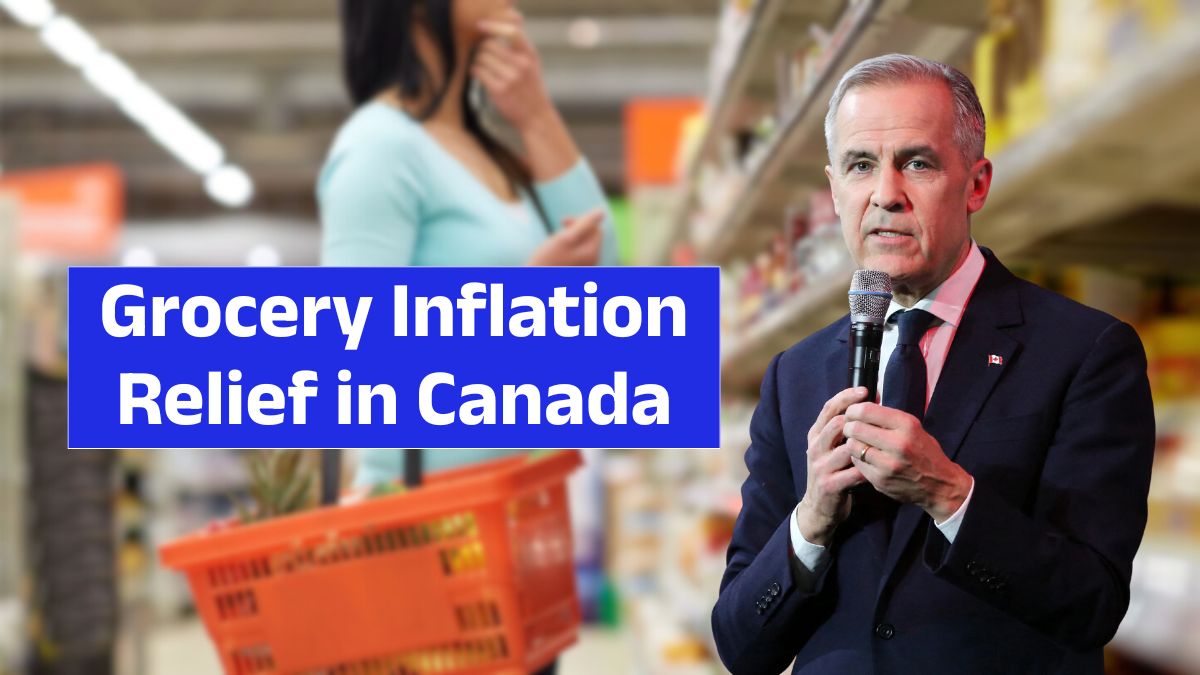In 2025 Canadian families are still battling the high cost of food, even as overall inflation slows. Grocery prices remain more than 25% higher than pre-pandemic levels, leaving households with significantly larger bills for essentials like bread, milk, meat, and produce.
To address this growing strain, major supermarkets across Canada have introduced a grocery price freeze along with targeted inflation relief measures. These moves are designed to give shoppers a financial break, stabilize grocery bills, and restore some predictability to household budgets.
This report explores which retailers are participating, what items are affected, how much families can expect to save, and what lies ahead for 2025 and beyond.
Why Grocery Prices Remain a Strain in 2025
Although the rate of inflation slowed in early 2025, grocery prices remain stubbornly high compared to 2020.
- Food costs are over 25% higher than five years ago.
- Families are spending hundreds of dollars more annually on essentials.
- Items such as meat, dairy, produce, and bread are driving the steepest increases.
The persistent gap has forced both government and retailers to act, with supermarkets rolling out temporary price freezes while policymakers implement longer-term reforms.
What Supermarkets Are Doing in 2025
Walmart Canada’s Price Cuts
Walmart Canada has taken the lead by slashing prices on hundreds of essential items.
- Products include fruits, vegetables, cheese, beef, bathroom tissue, and shampoo.
- The company estimates that households can save an average of \$450 per year.
- Further reductions are expected as the year progresses.
Other Major Chains – Sobeys, Metro, Loblaw, and Costco
- These chains have introduced temporary price locks on key staples.
- Many are also participating in a supplier cost freeze from November to January, ensuring no wholesale price increases during the peak winter shopping months.
- Short-term stability is the main benefit, but experts stress this is not a long-term solution.
Grocery Code of Conduct – Long-Term Reform
Alongside temporary measures, Canada is preparing to roll out a Grocery Code of Conduct in 2025.
- Purpose: To create fairer pricing agreements between suppliers and retailers.
- Benefits: Reduce disputes, prevent hidden fees, and ultimately create more stable consumer prices.
- Timeline: Full rollout expected by January 2026, though many major chains have already signed on.
Canada Grocery Price Freeze 2025 – At a Glance
| Retailer/Policy | Action Taken | Expected Benefit | Timeline |
|---|---|---|---|
| Walmart Canada | Price cuts on hundreds of staples | Save up to \$450 per year | Started June 2025 |
| Sobeys, Metro, Loblaw | Temporary price locks | Short-term stability | Ongoing 2025 |
| Supplier Cost Freeze | No supplier price hikes (Nov–Jan) | Slower price increases | Every winter |
| Grocery Code of Conduct | Fair-pricing rules for suppliers & retailers | Long-term price stability | Full rollout Jan 2026 |
How the Freeze Impacts Canadian Families
For millions of households, the immediate relief is welcome:
- Essentials like bread, milk, fruits, and vegetables now carry temporary stability in pricing.
- Families can budget more confidently with predictable grocery bills.
- Once the Grocery Code of Conduct is in place, households could see longer-term improvements.
However, experts caution that while these measures soften the blow, they will not completely erase years of accumulated food inflation.
Tips for Canadian Shoppers to Maximize Savings
Even with relief measures in place, smart shopping remains crucial.
- Shop where freezes apply – Walmart currently leads, but Sobeys, Metro, and Loblaw also offer locked prices.
- Use price-match policies – Take advantage of supermarkets that match competitor deals.
- Buy in bulk before February – Prices may rise again after the winter supplier freeze ends.
- Switch to store brands – Often included in inflation relief programs, offering cheaper alternatives.
- Track flyers and coupons – Weekly promotions highlight which items are frozen or discounted.
Looking Ahead – What Canadians Should Expect
The grocery price freeze is not a permanent solution, but it represents an important step in acknowledging and addressing food affordability issues.
- Short-term: Immediate savings through price cuts and supplier freezes.
- Medium-term: Ongoing retailer discounts and consumer savings opportunities.
- Long-term: The Grocery Code of Conduct promises a structural shift in how prices are set, reducing volatility by 2026.
For families, this year signals a turning point where both retailers and government are taking consumer affordability more seriously.
FAQs – Canada Grocery Price Freeze 2025
Q1: What is the Canada Grocery Price Freeze 2025?
It is a set of measures introduced by major supermarkets to freeze or cut grocery prices, giving Canadian households relief from high food costs.
Q2: Which supermarkets are involved?
Walmart Canada, Sobeys, Metro, Loblaw, and Costco have announced price freezes or temporary locks on essentials.
Q3: How much can families save?
Walmart estimates average annual savings of \$450 per household, with additional smaller savings possible at other chains.
Q4: What is the Grocery Code of Conduct?
It’s a new policy to create fair pricing rules between suppliers and retailers, aiming for long-term price stability starting in January 2026.
Q5: Will grocery prices return to pre-2020 levels?
No. Experts say these measures will stabilize prices but not fully roll back the 25% increase since 2020. Families will continue to pay more compared to pre-pandemic levels.






